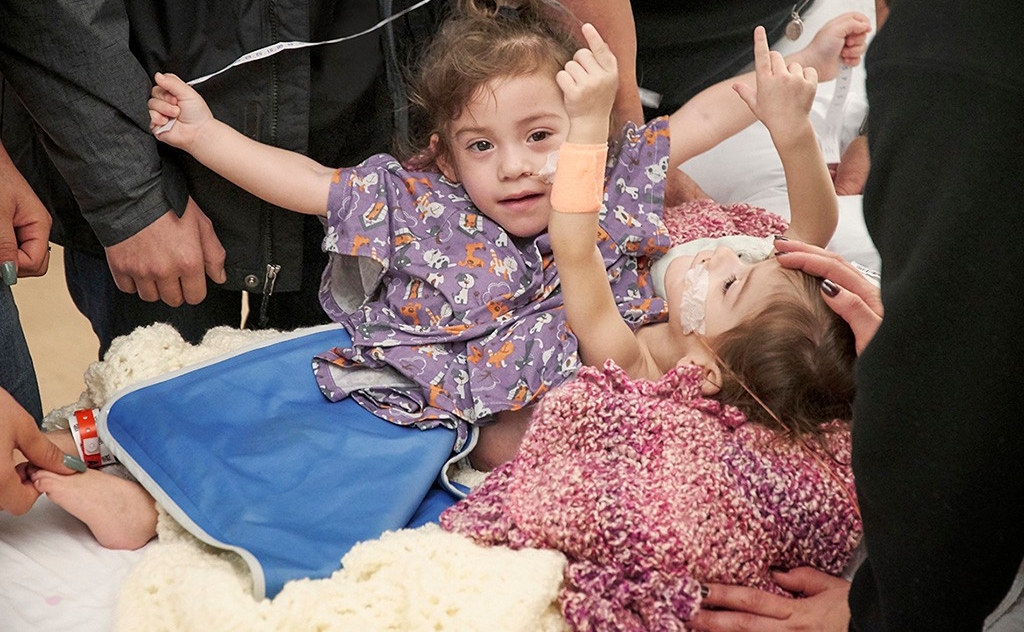Independence day
A successful separation of conjoined twin girls

Around 6 p.m. on Dec. 6, 2-year-old Eva Sandoval was wheeled across the hall from her twin sister, Erika. It was the first time in the girls’ lives that they had been in different rooms. The conjoined twins had just been separated at Lucile Packard Children’s Hospital Stanford, and Eva was being moved to another operating room in preparation for both girls’ reconstructive surgeries.
“We know that this is the right path for them: to be independent, to have the chance to succeed and explore on their own everything the world has to offer,” said the twins’ mother, Aida Sandoval, soon after the 17-hour separation.
“The results are as good as we could have asked for,” says lead surgeon Gary Hartman, MD, professor of surgery. The surgery, Hartman’s seventh conjoined-twin separation, was the culmination of plans launched when Aida was referred to Packard Children’s during her complex pregnancy. More than 100 hospital staff in nearly every department have taken care of Eva and Erika, who were born there in August 2014.
As they prepared, doctors warned the family that there was a 30 percent chance one or both girls would not survive separation.
“Before separation, you could think of their anatomy as two people above the rib cage, merging almost into one below the bellybutton,” says Peter Lorenz, MD, professor of surgery, who led the reconstructive phase. The girls had separate hearts, lungs and stomachs; a shared diaphragm muscle; one liver; one bladder; two kidneys; and three legs.
In surgery, the liver and bladder were both divided in two. Each sister now has one leg and one kidney. Tissue from their third leg, which would not have functioned for standing or walking, helped close Erika’s surgical opening.
Recovering at the hospital, Eva and Erika are happy and chatty, and are doing well in physical therapy, where they have been re-learning skills such as sitting up. Aida and husband Arturo are eager to welcome the girls back to the family’s home in Antelope, California, after they leave the hospital. “It’s amazing how strong these girls are, and it’s amazing what their team performed,” Aida says.

